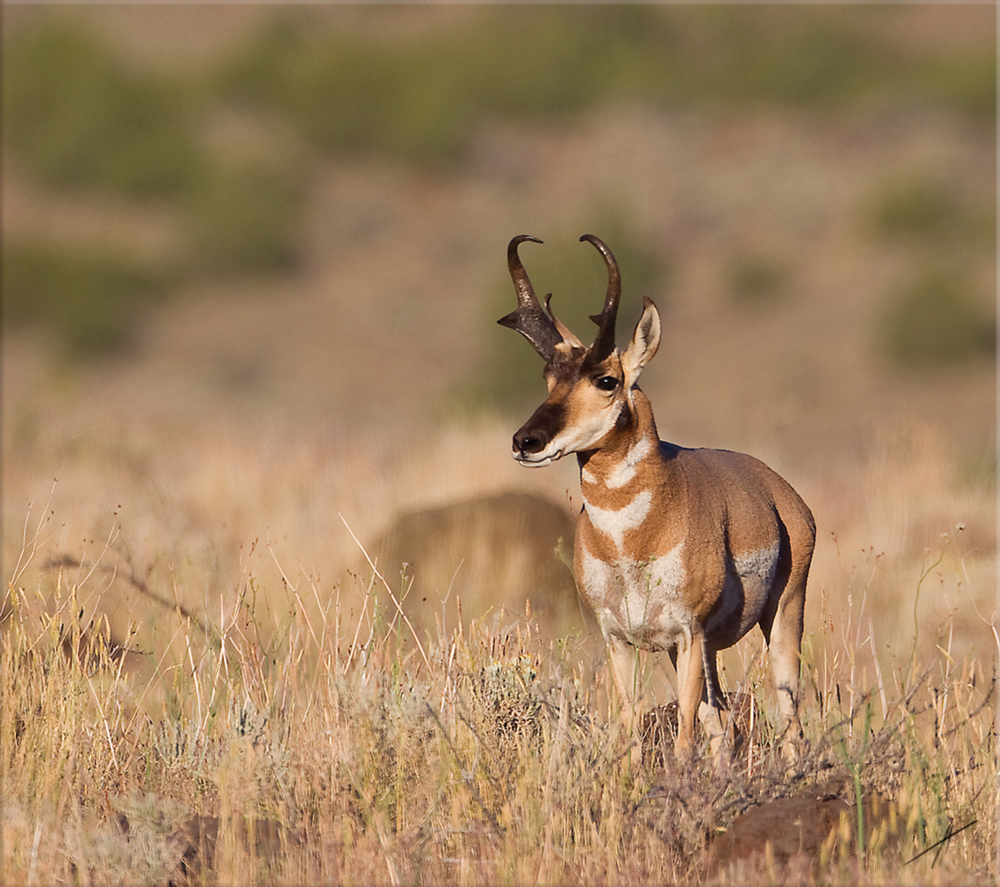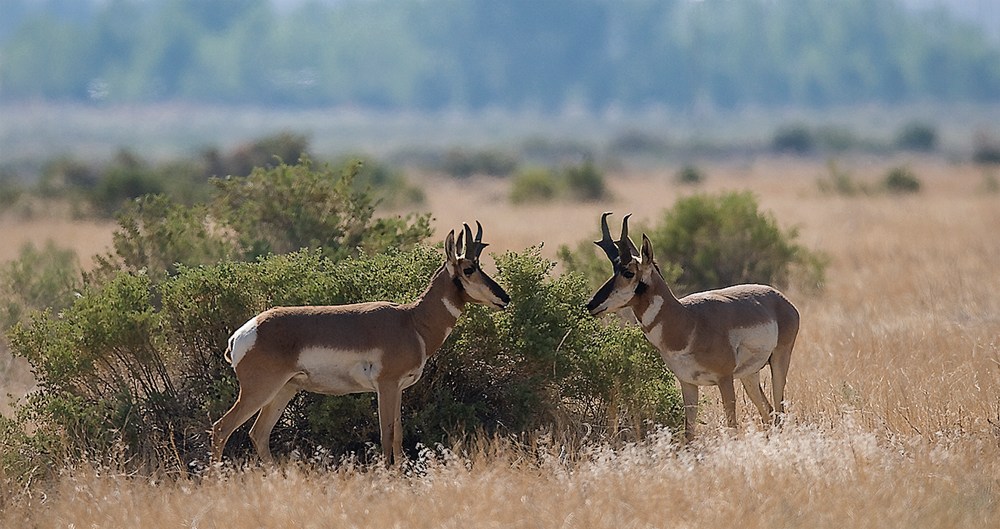Pronghorn Antelope
January – February 2013
“They are considered the second-fastest land animal behind cheetahs.”

Pronghorn are the fastest land animals in North America. Adults have been clocked at 55 mph and may reach 60 mph for short spurts. They are considered the second-fastest land animal behind cheetahs; however, they can sustain high speeds longer than the big cats.
- Technically, the pronghorn is not a true antelope. It is not closely related to the antelope of Africa or the goats of the Western Hemisphere. This unique animal has been roaming the plains of North America for thousands of years.
- Pronghorn antelope are found primarily in the valleys between mountain ranges in northern and central Nevada.
- Both sexes have horns, but the female horns are rarely longer than two inches if present at all. The average male horns (larger photo) range from one foot to 16 inches in length.
- An average adult male weighs 125 pounds, and females typically weigh 95 pounds. Males stand 31 to 40 inches tall at the shoulders; females are 28 to 36 inches tall. Pronghorn life spans range from six to 12 years.
- Pronghorn have disproportionately large hearts and lungs, with very efficient circulatory and respiratory systems. Their eyes are located far back on the sides of their head to allow a field of view of nearly 360 degrees. These adaptations allow pronghorn to detect approaching predators and escape by using their intense speed.
- Since 1950, NDOW has captured and released 2,903 pronghorn (of which 60 percent have come from other states) into suitable habitat in Nevada where they were previously eliminated or at low numbers as part of the statewide pronghorn restoration program. The first documented capture of pronghorn in Nevada was conducted in spring 1924.
This information is provided by the Nevada Department of Wildlife. ndow.org, 775-688-1500

Hunting Info
Mule deer, elk, pronghorn antelope, bighorn sheep, and mountain goats require tags to be hunted. The tag application period is from mid-March to mid-April. In 2011, 3,121 pronghorn tags were distributed in Nevada. ndow.org/hunt
